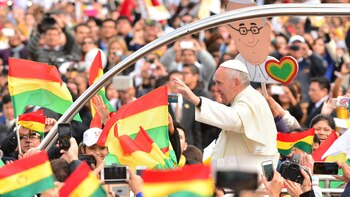
According to Kantar's most recent study, in which Colombians were asked about the country's economy, 14% of respondents believe that the country's economic situation improved, while 58% think it remained the same and 28% think it worsened.
Based on 12 questions that answered 1,349 Colombian households in strata 2 to 6, located in five of Colombia's major cities (Bogotá, Medellín, Cali, Barranquilla, Bucaramanga), the research investigated the current and future financial situation, the employment aspect, the increase in prices in the basket family and goods and services.
“With this type of study we can identify which socioeconomic strata are most affected, in which cities and how they project the future of the economy,” explained Juan Caro, director of new business for Kantar Worldpanel Colombia division, according to the testimony collected by the América Retail portal.
The study highlights that the increase in the prices of the basic basket represents a situation that worries 7 out of 10 Colombians, being, among the factors that most concern, the increase in the prices of services and goods, the economic situation of the household and the employment landscape.
By breaking down the data by city, Kantar was able to determine that the city where people are most concerned about the economic situation of their household is Barranquilla, followed by Bucaramanga, Cali, Bogotá, Medellin.
Likewise, Barranquilla also positioned itself as the city where most people are concerned about the price increase, according to the Kantar study.
Regarding the increase in prices, 6 out of 10 households, mostly in strata 2 and 3, have considered looking for cheaper alternatives to products. Other measures, which Colombian households have taken to cope with the increase in prices, include reducing costs in leisure activities, buying promotional products and/or seeking new income.
According to the Kantar study, on average, most Colombian households will choose to reduce the costs of their leisure activities or buy promotional products.
The study also revealed that the population, who live in socioeconomic strata 2 and 3, is the most vulnerable, since they are the most affected, by the economic situation of the country, regardless of the city in which they live.
Finally, Caro concluded that “this survey succeeds in concluding that Colombians, despite experiencing a period of high tension, see a positive picture regarding personal aspects despite the accelerated increase in prices of the family basket and project an indisputable improvement in the future, which is why they are already looking for multiple options that benefit your wallet.”
It is worth recalling that on April 5, Dane revealed that during the last year the cost of living increased by 8.53 per cent.
According to Dane figures, food and non-alcoholic beverages increased by 25.37%, and specifically in food the increase was 26.30%, between April 2021 and March 2022.
So far this year, inflation in food and non-alcoholic beverages has stood at 10.22 per cent, while total inflation has been 4.36 per cent. The highest price increases were recorded in the subclasses cassava (10.92 per cent), onion (10.65 per cent) and blackberries (9.60 per cent).
KEEP READING:
Últimas Noticias
Debanhi Escobar: they secured the motel where she was found lifeless in a cistern
Members of the Specialized Prosecutor's Office in Nuevo León secured the Nueva Castilla Motel as part of the investigations into the case

The oldest person in the world died at the age of 119
Kane Tanaka lived in Japan. She was born six months earlier than George Orwell, the same year that the Wright brothers first flew, and Marie Curie became the first woman to win a Nobel Prize

Macabre find in CDMX: they left a body bagged and tied in a taxi
The body was left in the back seats of the car. It was covered with black bags and tied with industrial tape
The eagles of America will face Manchester City in a duel of legends. Here are the details
The top Mexican football champion will play a match with Pep Guardiola's squad in the Lone Star Cup

Why is it good to bring dogs out to know the world when they are puppies
A so-called protection against the spread of diseases threatens the integral development of dogs




